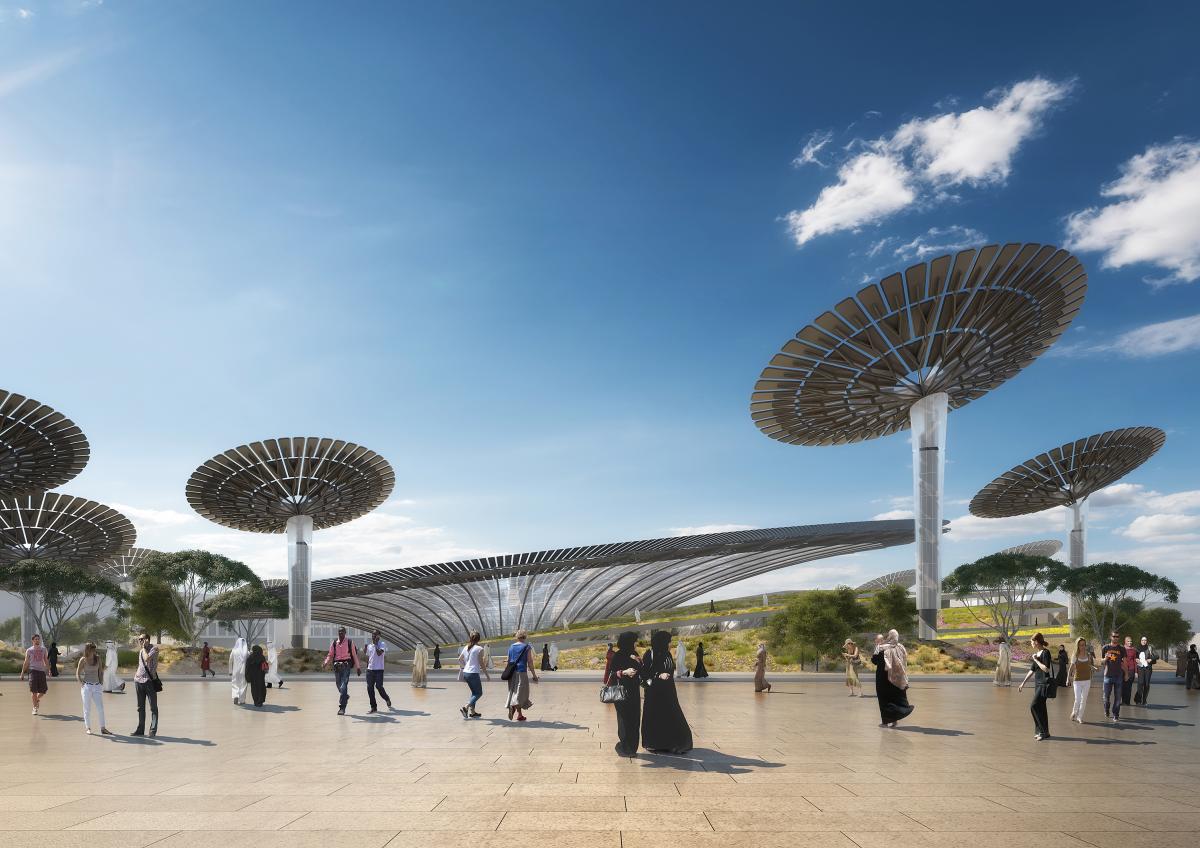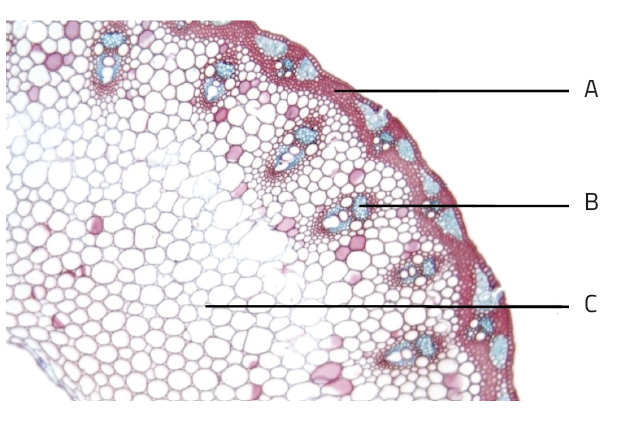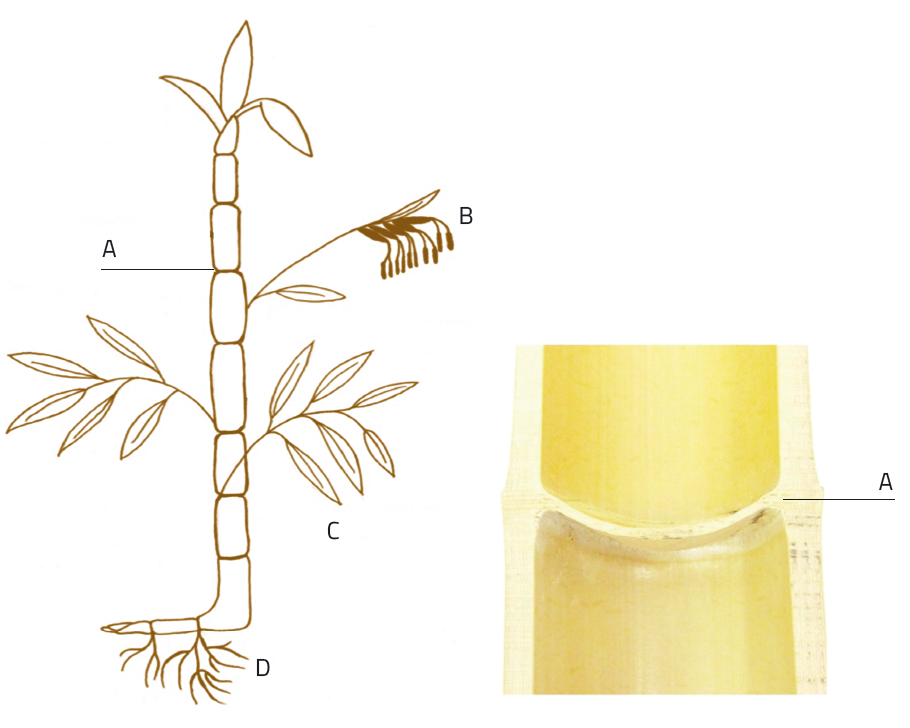Supporting materials
Download
Download this article as a PDF

A blade of grass and a high tower both need to stand up against forces that threaten to level them. Are there design principles that they can exploit to achieve this?
What does the Eiffel Tower have in common with a stalk of wheat? Not their scale, obviously – but if we look closely at their inner structures, they have a lot in common. Gustave Eiffel’s iconic structure, which heralded the new age of iron as a building material, succeeded because he was able to make a structure that was strong yet light. Like the tower, the wheat stalk needs to remain upright despite wind and weather, while using minimal materials. The design solution in each case is the same: the underlying structure is hollow and tubular rather than solid, retaining most of the strength without most of the weight.
Wheat stalks are not unique in providing a clever natural solution to an engineering problem. In fact, this is now an area of technical study with its own name: construction bionics.

Construction bionics is a branch of the science of bionics. Its main function is to identify structures and processes in biological systems that can be usefully applied to engineering constructions. The aim is to reduce the amount of both materials and energy used, thus creating more sustainable design principles – a very 21st-century ambition.
In construction bionics, lightweight constructions in nature serve as an inspiration for technical solutions. Just as the Eiffel Tower was constructed using the principles of hollow tubes (as are some bones in the human body), biological structures can provide models for the development of new building materials and designs.
The grass family (Poaceae, formerly Graminaceae) has a lot to offer construction bionics, with its long, thin stalks that combine high resistance to bending and breaking with minimal use of material. It’s worth taking a closer look at how grasses achieve this.

Viewing a cross-section of a stalk of wheat (Triticum spp.) under a microscope reveals the explanation for the mechanical strength of this member of the grass family (Speck & Speck, 2006). An outer layer of hard, lignified (woody) tissue, called the sclerenchyma, is strengthened on the inside by pressure from other tissues, such as vascular tissue and parenchyma (figure 1). The whole structure forms a cylinder, with the strongest tissue on the outside.
But the plant has another secret source of strength: behind the stalk’s outer wall is a fibre composite material. Lignified fibres are embedded into the softer, inner tissues, forming a material comparable in structure to reinforced concrete – a composite material made from a concrete matrix streaked with steel reinforcements.
However, this combination of different materials increases the risk that intense forces, such as strong wind, could tear the stalk apart, breaking one layer away from another as the stalk bends. This is why the inner stalk wall is constructed in the form of gradients, in which different properties, such cell size and cell wall thickness, change gradually and merge fluidly into each other, thus making the composite material more stable (figure 1).
Of course, the grass family member that we most readily think of as useful in construction is bamboo. In Asia, bamboo is often used as a building material or as scaffolding, even for some high-rise buildings, because of its excellent mechanical properties.
Although bamboo plants (Bambusoideae subfamily) are grasses, their size is exceptional. Some species, like the giant bamboo (Dendrocalamus giganteus), can reach a height of 30 m, growing up to 1 m a day. However, their structure is similar to that of many other plants: they have roots, a stalk, leaves and flowers.

Like other grass plants, bamboo has a hollow cylindrical stalk, with nodes (or knots) along its length (figure 2). The nodes, which divide the stem into segments, consist of thickened walls that extend across the interior of the stem. These strengthen the structure by preventing it from collapsing under a sideways force. If the stem were a completely hollow tube, any lateral pressure would cause it to first become oval-shaped and then to flatten completely; the flattened part could then bend and crease. The nodes provide support against the pressure of the applied force (Mattheck, 2004; Speck & Speck, 2006).

One futuristic architecture project that takes inspiration from nature to an extreme point is the proposed ‘Bionic Tower’ in Shanghai, China. If built, this visionary construction would be the tallest building in the world by far, at 1228 m tall and comprising some 300 floors. The design aims to copy structures found in nature – not only for the tower itself, but also for its foundations. A widespread network of anchorages, imitating tree roots, would replace conventional foundations, with the aim of providing better protection against earthquakes and transverse forces from high winds.
According to the architect Eloy Celaya, the extreme height of the building considers nature in another way: by providing living space for up to 100 000 inhabitants on a compact base area of just 166 m x 133 m, such towers could reduce the amount of land needed to accommodate an increasing world population, potentially allowing more of the world’s natural areas to be preserved.
We have devised some classroom activities on construction bionics, which are suitable for late primary-school to early secondary-school students. These experiments help students to discover for themselves the design principles discussed in this article. Worksheets and instructions for teachers can be downloaded from the additional materials sectionw1.
In the first activity (Testing the stability of bamboo and wood), students compare the strength and rigidity of solid wood and bamboo by loading increasingly heavy weights onto sticks of each material and then measuring their deflection. Students will discover that a hollow bamboo stick deflects less than a solid wooden stick.
In the second activity (Ropes and cylinders), students investigate why bamboo is so strong and rigid by looking at a longitudinal section of a bamboo stick, showing the nodes and internodes. They then investigate how the nodes add strength to the whole stick by using paper strips taped across the inside of a cardboard tube.
These simple demonstrations can be followed up with further research or discussions on construction bionics, perhaps focusing on the fantasy-like Bionic Tower or other futuristic bionic architectural structures.
What a great way to introduce some cross-curricular ideas and to enthuse students about plant biology and engineering. The idea that buildings of the future may well be inspired by knowledge and understanding of plant structure and function could help to raise the profiles of many science-related studies – from botany to architecture – in the minds of students.
Not only can the article be used for background reading and comprehension exercises, but also the two suggested classroom activities allow students to try out some of the ideas. Neither activity requires much in the way of specialised equipment, but they both give students the opportunity to investigate materials for themselves and practise some elementary construction. The activities could be extended to form longer projects, perhaps for a science fair or STEM (science, technology, engineering and mathematics) investigation.
Questions about the article could include:
Dr Sue Howarth, UK
Download this article as a PDF